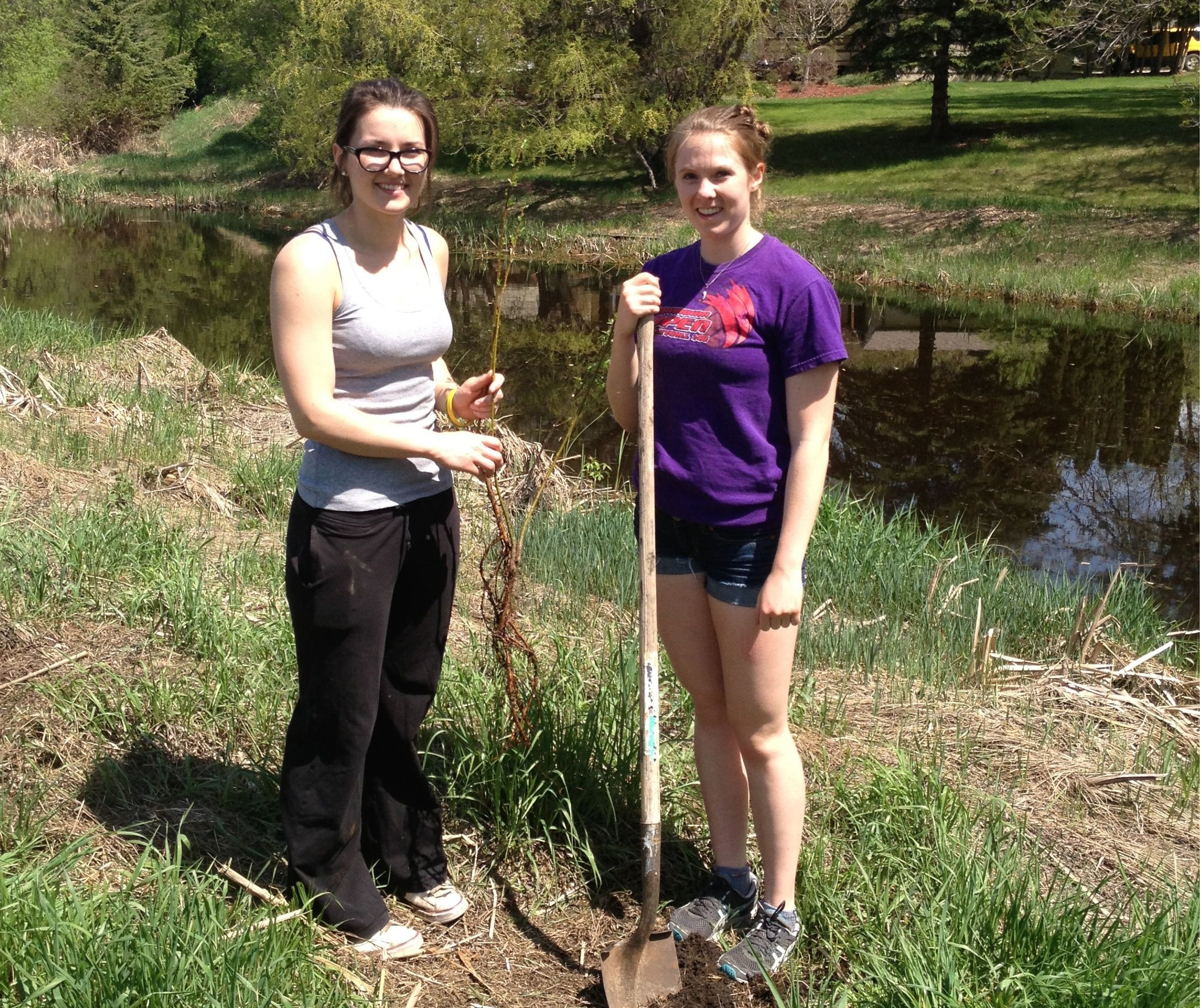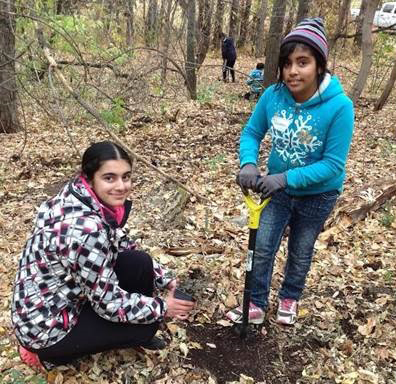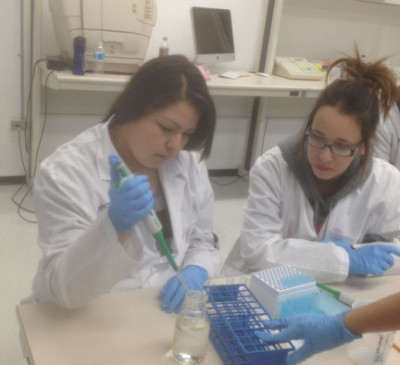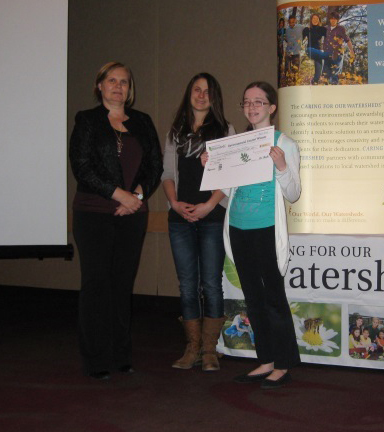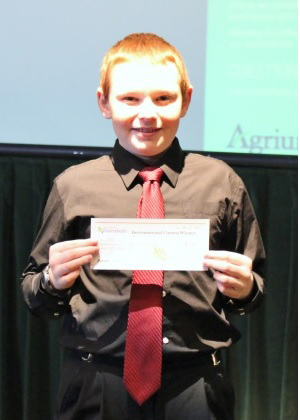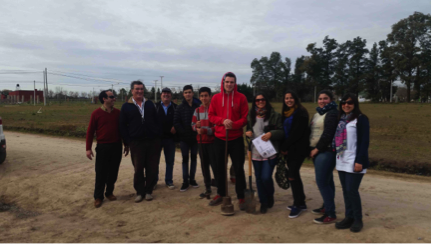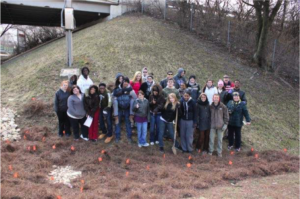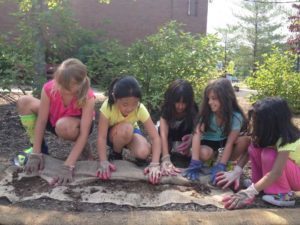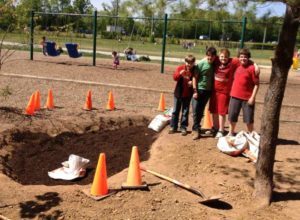2014 Antelope, California, USA
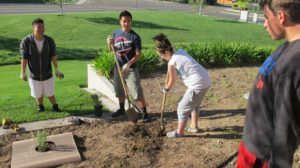
Students in Antelope High School’s People of the Planet Club helped to implement Dayna Berry’s “Removing the Thorns” proposal, which took first place at the 2013 Caring for Our Watersheds California Final Competition. This proposal was to remove existing non-native rose bushes around the school and replace them with a variety of native plants. The roses require watering and application of chemical pesticides/ fertilizers, which have the potential to run-off and pollute the surrounding creeks. In addition, these rose bushes flowered for only 2 weeks out of the year, so they were very poor plants to attract pollinators. The native plantings, adapted to the local climate, would not require long-term irrigation or pesticides and would also provide habitat and food sources for local birds, butterflies, and other wildlife.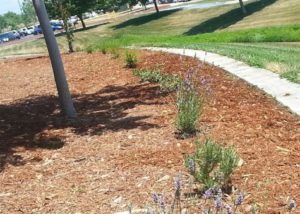
Students worked to replace the non-native rose bushes with CA native plant species that are drought tolerant and require no additional chemical inputs. They also mulched the area to prevent evaporation and to help control weeds. At project completion, they had planted 15 Blue blossom ceanothus, 24 Provence lavender, and 20 California fuchsia, as well as adding 16 yards of mulch to the area. Nutrien implementation funds made the purchase of plants and mulch possible
The students and others on campus are pleased with the initial results as the plants are already starting to bloom. While the plants are small now, they will grow quickly to beautify the campus as well as provide many flowers for pollinators.
